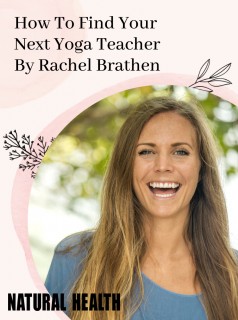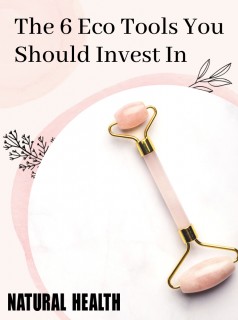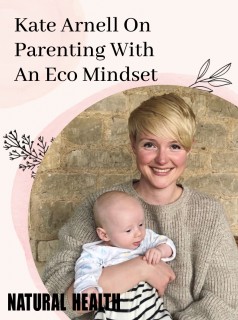Could a massage really help unlock deep emotional issues in the same way as a counsellor? Holistic guru Jane Alexander reports
Is bodywork the new psychotherapy? Is it really possible to access and process all your painful memories and hurts without having to talk about them? It may sound like wishful thinking but there’s a growing move towards healing the mind through working with the wisdom of the body.
It makes sense. Our subconscious isn’t just in our heads – it’s spread right throughout our bodies. Psychologists have found that emotions and memories can be held in the body, in the muscles, fascia (the connective tissues) and even in bone. I have been researching natural therapies for the last 30 years and hundreds of bodyworkers – from aromatherapists and zero balancers, to reflexologists and Rolfers, have all told me the same thing: bodies hold memories and, equally, can release them.
During periods of trauma, we make snapshots of experiences that have high levels of emotional content. These memories are held below consciousness in the tissue of the body. Unfortunately these repressed memories often create an undercurrent of residual psychological distress (such as anxiety, fear, guilt, shame, grief, anger and depression) alongside physical discomfort.
In the late 1940s American biochemist Dr Ida Rolf discovered that by manipulating the fascia she could bring about profound changes to both body and emotions. The fascia will adapt to support whatever patterns of movement and posture our bodies adopt. If you have an accident, the fascia will adapt to protect the injury. Equally fascia will stretch to hold old emotional hurts, locking them deep inside our bodies. However Dr Rolf found that by manipulating the fascia back into their original position, she could reprogramme her patients’ neurological pathways. Once people gained their original alignment, they didn’t just find physical ease – they changed on a mental and emotional level as well.
I clearly remember my first Rolfing session. As therapist Jenny Crewdson pressed under my rib, I was hurtled back in time to my eight-year old self tumbling off my bike and winding myself on the grass. It was so clear and so vivid – I could see the green of the grass, the red paint of my bike. I could even smell the sun on my skin. More than that, I felt awash with the old feeling of shame and embarrassment. I breathed into it and, as the memory cleared, I felt somehow lighter. Rolfing (and its close cousin Hellerwork) is usually conducted in a series of 10 or 11 sessions (find out more at rolf.org and hellerwork.co.uk ).
The beauty of bodywork is that it can reach people who would never consider psychotherapy or even a counselling session. You don’t have to dig around, hunting out old wounds. The body will bring up what it wants to deal with and very often the issue will simply drain away quietly and painlessly. Of course, it isn’t always enough on its own and I’m not remotely suggesting that bodywork can take the place of psychotherapy in all cases. I firmly believe the future lies in combining the two. In my ideal world, people would see bodyworkers and therapists in tandem. This is exactly what I did, 20 years ago, when I realised I needed to work on my fear of pregnancy and childbirth. I had sessions with a Jungian psychotherapist and an amazing bodyworker. Both therapists were stunned at the swift progress I made and how the two disciplines complemented one another.
Back in the 1960s, Gerda Boyesen would not have been remotely surprised. A Norwegian-born psychologist and physiotherapist, she realised that she could get better results in her psychotherapy by working on the body as well as the mind. She used deep massage but she also noticed that the greatest release came when the gut started rumbling. She listened, experimented and finally developed what she called psycho-peristalsis, a finely tuned technique which encourages the body to literally ‘digest’ emotional stress through deep powerful massage. It was the birth of biodynamic psychotherapy (lsbp.org.uk). One week you could find yourself sitting in a chair talking about your life, just like regular psychotherapy. The next session you might end up pummelling your fists into a mattress on the floor. Then again, you are equally likely to spend an hour on a massage couch with your therapist giving you a deep bodywork session.
It isn’t even necessary to delve deep into the body as SHEN (Specific Human Emotional Nexus, shentherapy.info) therapy proves. Around 25 years ago Richard Pavek, an American scientist, set out to discover how healing worked – scientifically. Along the way, he figured out a gentle yet profound way of clearing emotional blocks. In a SHEN session, the practitioner places his or her hands in a series of specific sequences on the client’s body – directing subtle energy through the regions of the body where we experience emotions.
Nowadays practitioners combine ‘headwork’ with bodywork in a host of different ways. Many work with the breath and it’s wonderful to see the rise of holotropic and transformational breathwork. Others encourage their clients to use movement to express how they feel; or they use sound, asking clients to make sounds, rather than coherent speech. Yet more work directly with the body, using touch and manipulation to trigger change.
4. Therapies to try today
Aside from the techniques already mentioned, the below four therapies can help with emotional healing.
1. Emotional Freedom Technique
Emotional Freedom Technique (EMT) involves gentle tapping on various meridian points combined with gentle counselling – the effects can be swift and deep (theenergytherapycentre.co.uk ).
2. Emmett Technique
Developed in Australia, this technique uses the application of light pressure at particular points, in a sequence that enables the gentle physical release of muscle group (emmett-uk.com).
3. Watsu
The brainchild of Harold Dull, watsu combines the therapeutic effects of shiatsu with the healing power of water. Sessions take place in a warm pool and the practitioner cradles, stretches and manipulates your body. Powerful and highly emotional (aquatictherapy.co.uk ).
4. Zero Balancing
Founded by Dr Fritz Smith, an American doctor and osteopath, ZB works primarily on the bone structure – blending energywork and bodywork (zerobalancinguk.org ).
Article by
Jane Alexander
Holistic Health Expert
Jane Alexander is the author of over twenty books on natural health and holistic living, including the bestselling Spirit of the Home and The Detox Plan.
Discover more
Article by
Jane Alexander
Holistic Health Expert
Jane Alexander is the author of over twenty books on natural health and holistic living, including the bestselling Spirit of the Home and The Detox Plan.
Discover more























